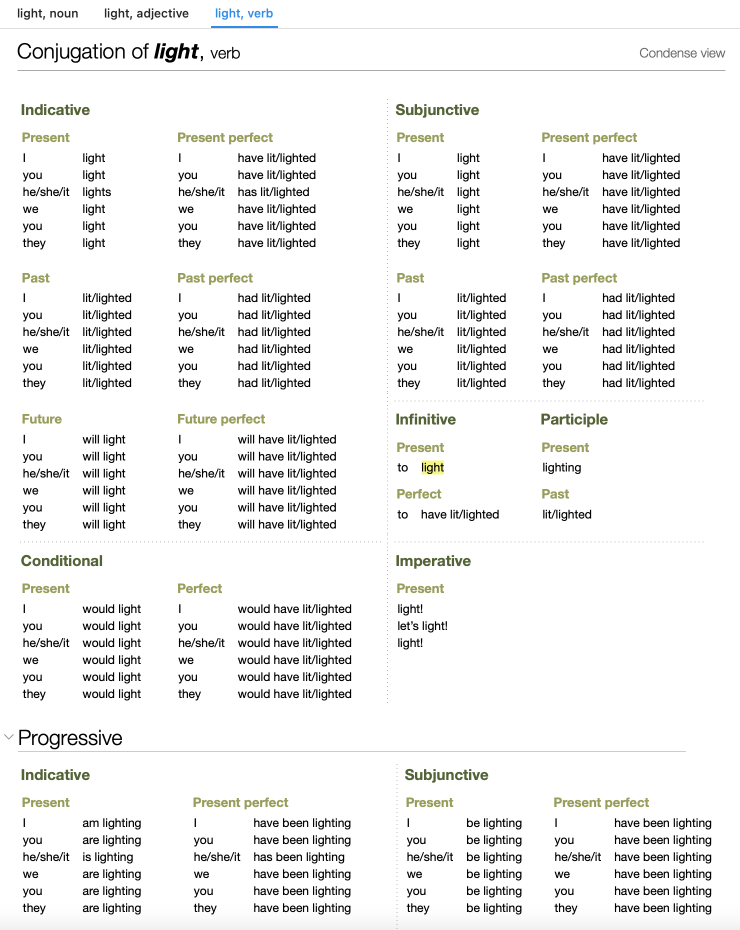Content of the Dictionary of Conjugation
Antidote is one of the few English-language resources offering complete conjugation information for all of the verbs in its dictionary, giving you hundreds of thousands of conjugated forms, all accessible with a simple click of the mouse.
-
 21A
21A
Conjugated forms
Conjugation information is presented intuitively in the form of a table, with the appropriate verb forms for all relevant tenses and moods, as well as the progressive aspect. If an auxiliary verb is required, it is shown with the verb form in question. The form that you search for is highlighted to help you identify it. Additionally, you can click any verb form to select it, then insert it into your text by clicking in the toolbar.
Show all
By default, the dictionary of conjugations displays a condensed table featuring only the principal forms of a given verb, along with any auxiliaries. This view may well provide all the information you need, as English verbs take identical forms for many tenses and aspects. However, you may also find it useful to click Show all in the top right corner of the main panel, revealing an exhaustive list of conjugations for every person, tense and mood. Click Condense view, also in the top right corner, to return to the condensed table.
Progressive aspect
The conjugation dictionary also provides conjugation information for all tenses and moods in the progressive aspect (formed with the auxiliary verb to be and the –ing ending). Progressive conjugations are located in a separate section below the other conjugated forms, and can be expanded or collapsed by clicking the hide/show chevron next to the section title.
Other conjugation resources
You can, of course, count on the corrector to spot conjugation errors in your text and to find the appropriate form for you. Additionally, a basic summary of inflected forms can be found for any verb in the Details panel of the entry in the dictionary of definitions.